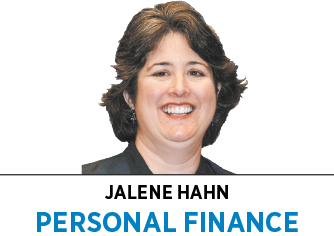Subscriber Benefit
As a subscriber you can listen to articles at work, in the car, or while you work out. Subscribe Now As investors continue to look for increased yield, I have noticed a lot more interest in closed-end funds. The concept of closed-end funds has been around since 1893, 30 years before the advent of open-end mutual funds and long before the introduction of exchange-traded funds. A “closed” mutual fund may be closed to all new investment or just to new investors. It may be closed permanently or just temporarily.
As investors continue to look for increased yield, I have noticed a lot more interest in closed-end funds. The concept of closed-end funds has been around since 1893, 30 years before the advent of open-end mutual funds and long before the introduction of exchange-traded funds. A “closed” mutual fund may be closed to all new investment or just to new investors. It may be closed permanently or just temporarily.
Investopedia defines a closed-end fund as “a pooled investment fund with a manager overseeing the portfolio; it raises a fixed amount of capital through an initial public offering (IPO). The fund is then structured, listed and traded like a stock on a stock exchange.”
Advantages of all types of pooled funds are access to professional investment management at lower minimums, economies of scale and instant diversification. The key differentiators are structure and purpose of fund, share pricing and the use of leverage.
Closed-end funds are often actively managed, tend to have a narrow investment focus, use illiquid or thinly traded investments, and are structured to provide income. Alternatively, ETFs mimic an index such as the S&P 500, are passively managed, and trade in more liquid investments. Open-end mutual funds are more diverse in management style and investment goals.
Another distinguishing factor is ETFs’ and open-end mutual funds’ ability to issue or redeem new shares daily to meet investor demand. In contrast, closed-end funds issue a set number of shares during an IPO and do not create or redeem additional shares.
Because the funds do not need to maintain cash reserves for redemptions or invest an influx of cash at an inopportune time, they take a longer view and may be more flexible in asset selection. Share prices will trade at a premium or discount to net asset value depending on market demand and a variety of subjective factors, including investor sentiment about broad market or economic outlook, relative strength of underlying assets or simply an aversion to leverage.
While closed-end fund and ETF shares trade on an exchange, the ability of an ETF to change the quantity of shares outstanding keeps pricing closer to net asset value. Open-end mutual fund shares trade directly from the fund manager at net asset value calculated at the end of the trading day.
The ability to borrow money, also known as the use of leverage, is a hallmark of closed-end funds, also known as CEFs. According to the Investment Company Institute, “The use of leverage enables a closed-end fund to raise additional capital, which it can use to purchase more assets for its portfolio. The use of leverage by a closed-end fund can allow it to achieve higher long-term returns, but also increases the likelihood of share price volatility and market risk.”
According to PIMCO, “before investing in a closed-end fund, it is important to review its trading history, performance, current earnings in relation to distributions, underlying asset class, and sector exposures, as well as how the CEF may complement other elements of a portfolio. Without question, CEFs are a bit complex; and they tend to be more volatile and have portfolios that are less liquid than conventional open-end funds.” Understanding the downside of leverage should be a key factor in the search for higher payouts.
Closed-end funds used with caution and experience can add diversification and additional value for sophisticated investors. They are complicated investments and the structure and nature of risks involved are not appropriate for many investors, but for the right situation they have the potential to offer enhanced returns.
As with any investment, increased return is also associated with increased risk.•
__________
Hahn is a certified financial planner with WWA Planning and Investments. She can be reached at 812-379-1120 or jalene@wwafp.com.
Please enable JavaScript to view this content.
